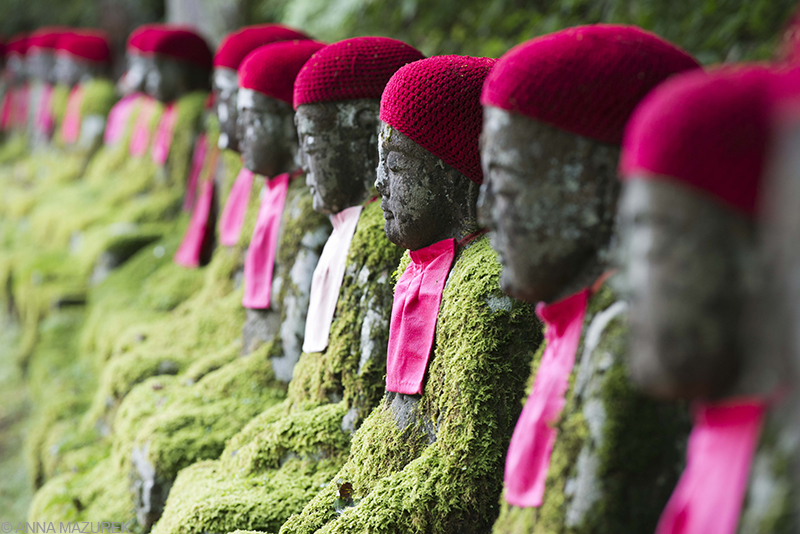
The Kanmangafuchi Abyss in Nikko, Japan is lined with statues of a Jizo, a Bodhisattva who is the guardian of travelers and children.
The more I travel, the more one place reminds me of another in small ways. Japan is one of the few exceptions. There’s no place in the world as safe, bustling or as efficient as this tiny island nation, which houses 127.3 million people on land mass smaller than California.
I spent three weeks zipping around Japan on bullet trains visiting friends, hiking ancient cedar forests and photographing mountain-side shrines. My travels always revolve around stunning landscapes or architecture. My photography (and stomach) fuel my adventures and dictate my itinerary. I’m also intrigued by Buddhist philosophy. Japan had no shortage of either and did not disappoint.
If you’re planning a trip to Japan, here are nine places not to miss. Some are obvious spots but others are short day trips from large cities that are too often skipped. (All places mentioned are accessible directly by train unless otherwise noted.)
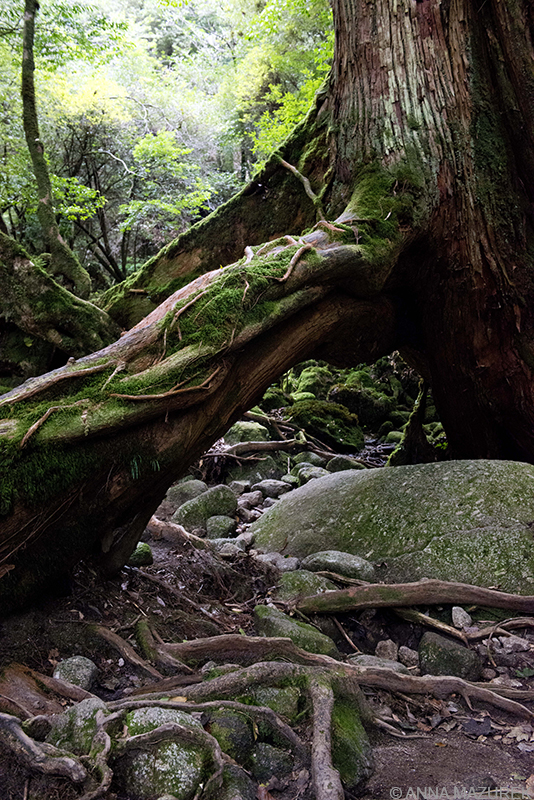
Yakushima is an island covered in ancient cedar forests, 73 miles south of the town of Kagoshima.
Yakushima
Hiking through the ancient cedar forests of the Yakushima, a subtropical island off the southern coast of Kyushu, was one of the highlights of my trip to Japan. The island is covered with trees that are more than 1000 years old. The only downside is that the island is the wettest place in the country so prepare to get soaked. Stock up on ponchos and rain pants at Daiso, the Japanese dollar store. Both worked well for me! Also, the island isn’t cheap, but it’s totally worth the cost to get there!
How to get to Yakushima: The cheapest way to reach the island is to take the normal slow four-hour ferry (Yakushima 2) from the town of Kagoshima, which is easily accessible by train, (ferry cost one-way: 4900 yen/$43 USD; Return: 8900 yen/ $78 USD.) There is a more expensive high-speed ferry that runs six times a day and take less than two hours if you get the direct route (one-way: 8300 yen/$73 USD). There is also an airport on the island. Buses around the island are limited so plan your schedule around the buses unless you rent a car.
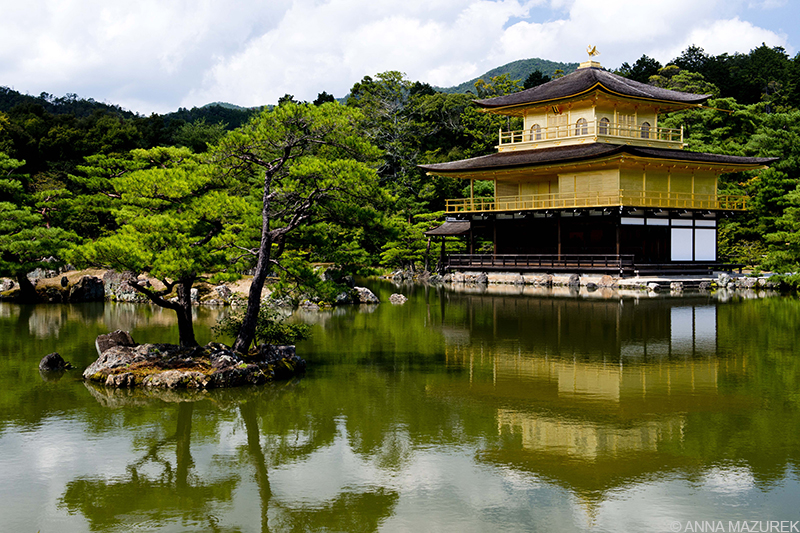
Kinkaku-ji, known as the Golden Pavilion, is located in Kyoto and was rebuilt in 1955 after being set on fire by a frantic monk.
Kyoto
Kyoto is Japan’s shining gem. The former imperial capital is known for endless temples, gardens and shrines. Wander through the beautiful streets of Gion, the geisha quarter and entertainment district. Don’t miss the enormous Kiyomizu-dera temple built in 1633 and postcard-perfect Golden Pavilion, known as Kinkaku-ji, which is covered in gold leaf and perched on the edge of a reflecting pool. Both are part of the 17 monuments that comprise the UNESCO site known as The Historic Monuments of Ancient Kyoto. The best time to visit the city is in the spring for the cherry blossoms or the fall for the colorful foliage. Set aside several days or a week to explore the city and the surrounding area!
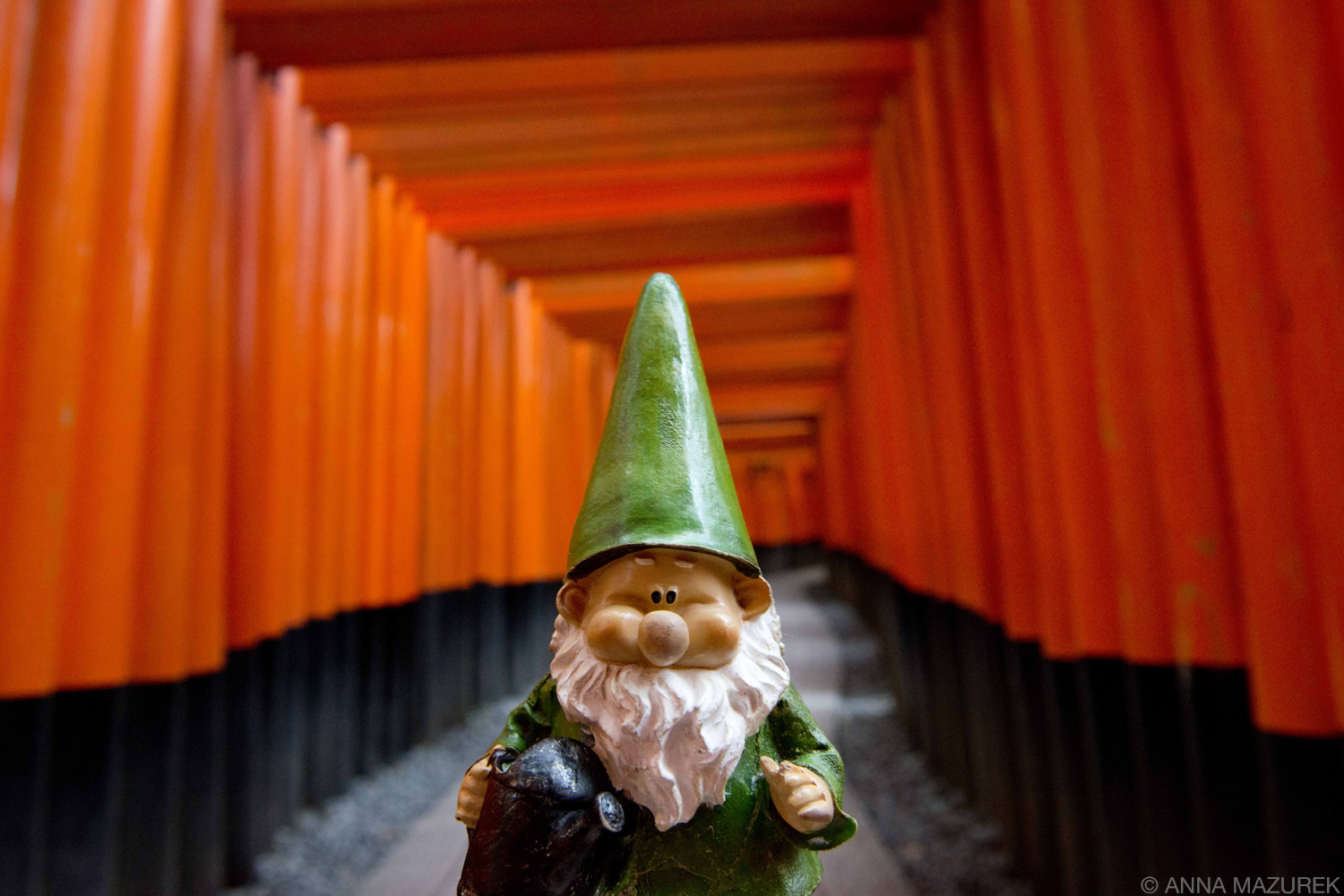
Clearly, I had to get an iconic shot of Alfred the gnome at Fushimi Inari, where a few scenes of the film Memoirs of a Giesha were shot.
Fushimi Inari
Thousands of red torii gates line the pathways of the scared Mount Inari, named after the Shinto god of rice. The main shrine lies at the base of the mountain and smaller shrines line the trails to the top of the mountain. It takes roughly two to three hours roundtrip to hike to the top. For more about my trip to Fushimi Inari and how to photograph the site without people, check out this post!
How to get to Fushimi Inari: Take a JR Nara Line train from Kyoto station two stops to the Fushimi Inari Station. The shrine is walking distance from the station.
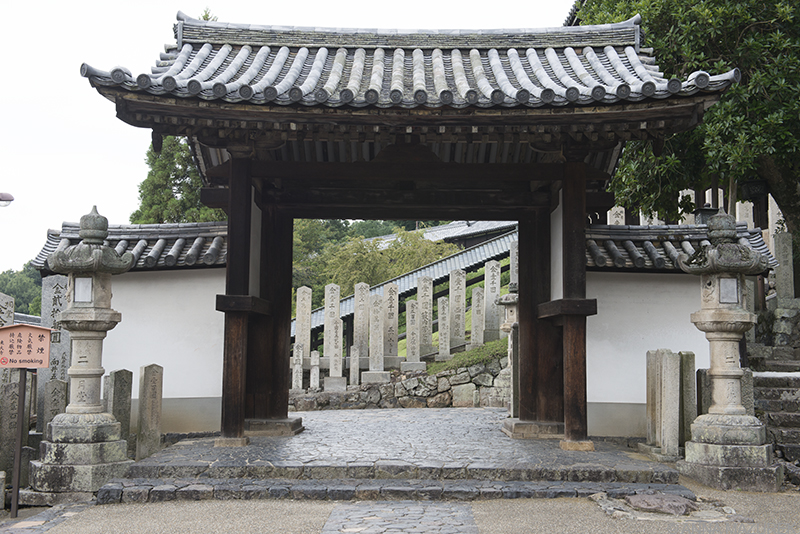
Nara is a very walkable city filled with eight UNESCO World Heritage Sites. It’s an easy day trip from Kyoto.
Nara
In the year 710, Nara was established as Japan’s first permanent capital known for the wild deer that roam the streets. The town is home to the oldest and largest temples in the country including Todaiji, which features the largest wooden building in the world housing a 15-meter-tall Buddha statue. My favorite writer, Pico Iyer, lives in Nara. He writes about the town occasionally especially in his book, The Lady and The Monk: Four Seasons in Kyoto, which is a must read for any trip to Japan.
How to get to Nara: It’s a 45-minute train ride from Kyoto Station to Kintetsu Nara Station.
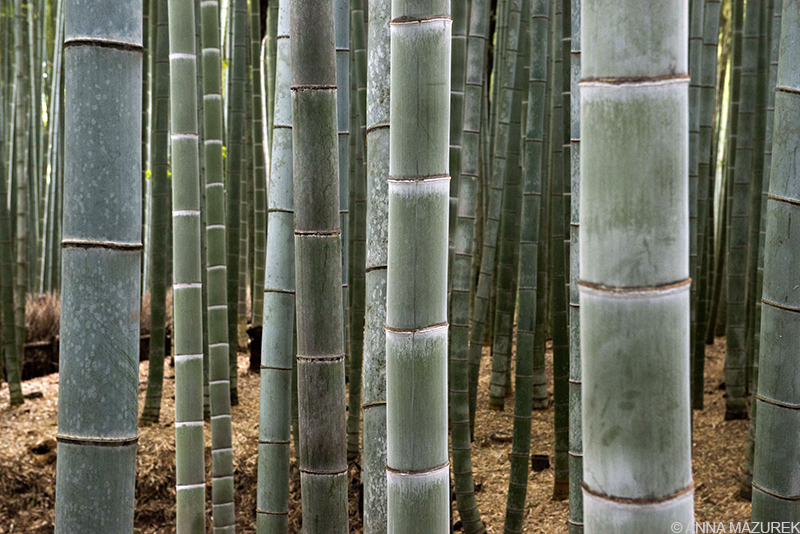
The Arashiyama bamboo grove is very short but extremely photogenic. Arrive early for the best photo opportunities!
Arashiyama (Bamboo Forest)
The stunning bamboo groves of Arashiyama are famous. While the groves are gorgeous, they are very small and crowded so go early if possible. The town is also filled with a plethora of scenic temples and gorgeous gardens and make a great day trip from Kyoto.
How to get to Arashiyama: The town is a 15-20 minute train ride from the Kyoto Station. The central part of town is a short walk from the station.
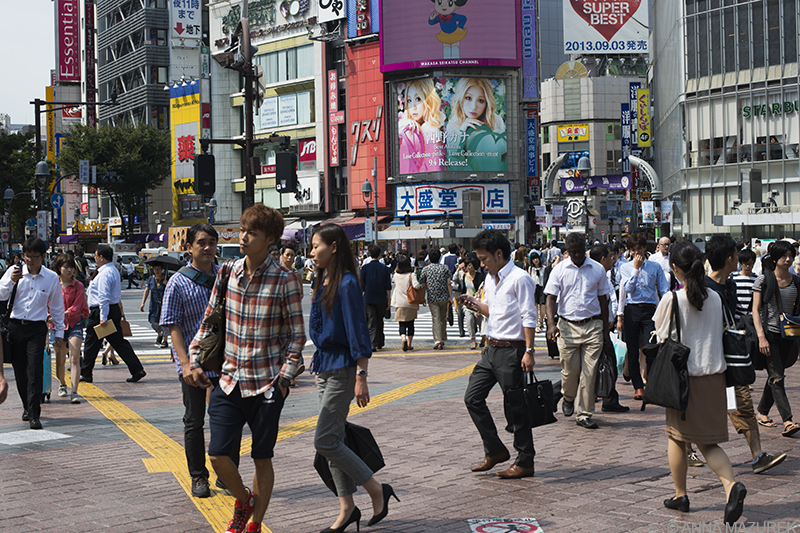
Five pedestrian lanes merge to create the Shinjuku crosswalk in Tokyo, which is rumored to be the busiest in the world.
Tokyo
Tokyo was like a posh version of India – a city of beautifully organized chaos. Set aside a few days to explore the cities various neighborhoods – the madness of the famous Shinjuku crosswalk, the sleek electronics district of Akihabara and the majestic Meiji Shrine that’s only a few minutes away from the hip fashion scene in Harajuku. Don’t miss the collection of tiny, charming dive bars of Golden Gai or a baseball game. Karaoke is clearly a must! Take your stomach on a tour of all the incredible cafés of the hip Shimokitazawa neighborhood, which Tokyo Becky talks about in her Travel Tuesday Interview that’s filled with Japan travel tips!
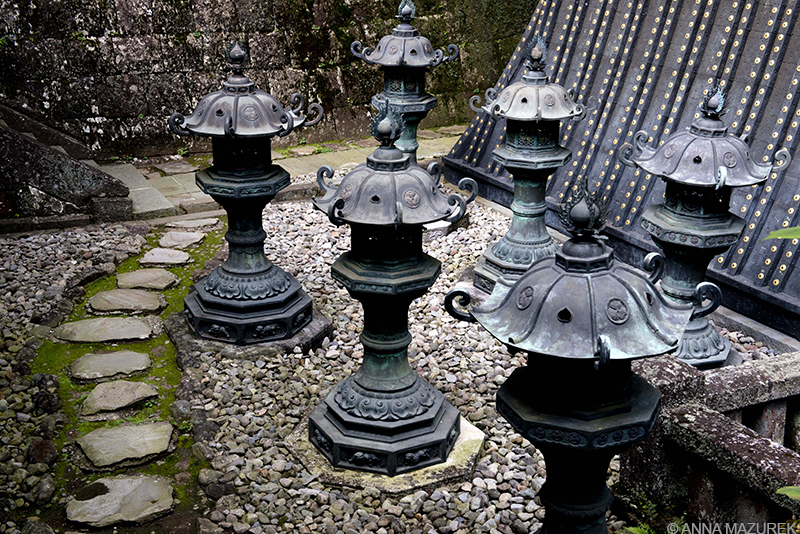
Nikko is a postcard-worthy town filled with scenic shrines that’s an excellent day or weekend trip from Tokyo.
Nikko
Nikko is one of the many great day trips from Tokyo. It’s the gateway to the Nikko National Park, which is filled with hiking trails, waterfalls and scenic mountainous views. The town is famous for one of the most lavishly decorated shires in the country, Toshogu, and a great spot for fall foliage. Be sure to stroll down the walking trail by the scenic gorge known as the Kanmangafuchi Abyss that is lined with stone statues of a Jizo, a Bodhisattva who is the guardian of travelers and children.
How to get to Nikko: To reach Nikko using a Japan Rail Pass, take the Yambaito or Nasuno Shinkansen from Tokyo for 50 minutes to Utsunomiya. Change to the JR Nikko line to the JR Nikko station (45 minutes). Be sure to check trains schedules for the Nikko line in advance since they can be limited.
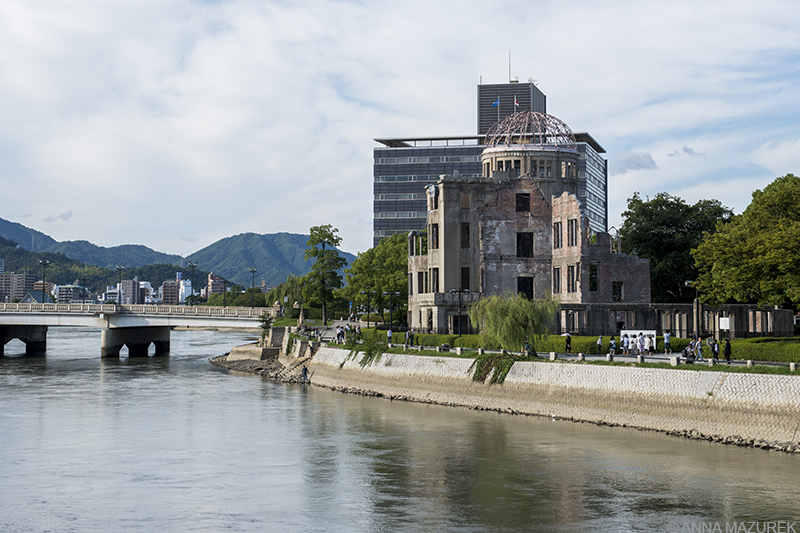
Hiroshima Prefectural Industry Promotion Building is only building left standing in the city center after the atomic bomb was dropped in 1945.
Hiroshima
On August 6, 1945, the atomic bomb was dropped on Hiroshima. The only visible sign of the bombing in the lush green city center are remains of the Hiroshima Prefectural Industry Promotion Building, known as the A-Bomb Dome. The building is located along the Motoyasu River in Hiroshima Peace Memorial Park, which is home to the Hiroshima Peace Memorial Museum, which is a must-see. (Admission: 200 Yen/$1.76 USD) The museum depicts life in the city before and after the bomb was dropped including artifacts from the victims and personal stories from survivors. Everyone should see this museum if only to fully understand the disastrous effects of nuclear weapons.
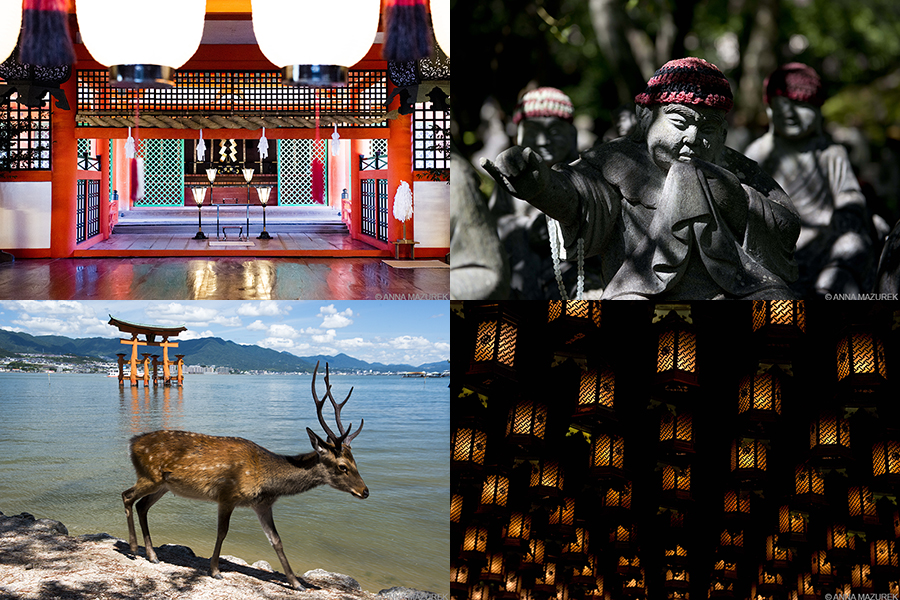
Clockwise from top left: Istukushima Shrine, statues at the Daisho-in Buddhist Temple, lanterns in the cave temple at Daisho-in Buddhist Temple, and wild deer near the “floating” torii gate in Miyajima.
Miyajima
Miyajima is a small island near Hiroshima is famous for a large “floating” red torii gate that is surrounded by water during high tide. Wild deer also roam the island. The main highlights include the floating Istukushima Shrine, a stunning mutli-building Shinto shrine. (Admission $2.50 USD)
Aside from the floating torii gate, my favorite part of the island was photographing the Daisho-in Buddhist Temple, a massive complex with statue gardens and many prayer halls. It is located at the foot of Misen Mountain and is the main temple of the Shingon Buddhist school of Omuro. One of my favorite photographs was the latern-covered ceiling of the Henjokutsu Cave, home to 88 Buddhist icons.
How to Get to Miyajima: From Hirmoshima station, take the JR Sanyo Line to Miyajimaguchi Station (covered by Japan Rail Pass) to the ferry port. There are two companies who run ferries (10 minute ride, 180 yen one way).
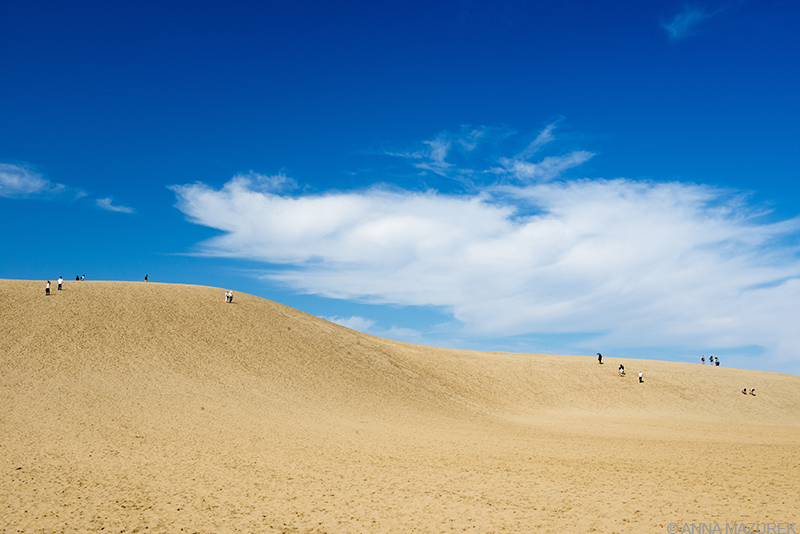
If you get temple fatigue, spend a day at the Tottori sand dunes and Sand Museum, which is three hours from Kyoto by train.
Tottori Sand Dunes
There are 16 kilometers of large sand dunes along the coast of the Sea of Japan near the city of Tottori located in western Japan. The dunes are the largest in the country and up to 50 meters high, which is a nice leg workout. There is one lone camel on the dunes that you can pay to ride, but the distance is extremely short for the steep $12 USD price. (I love camels so I considered it.) The Sand Museum (admission: 600 yen/$5.29) is adjacent to the dunes and features intricate large-scale sand sculptures from artists around the world. The museum itself was impressive, and I totally recommend it.
How to get to Tottori: From the Tottori train station, take the local bus at stop #0 in front of station that’s bound for Tottori Sakyu and get off at the last stop. The ride is 20 minutes and costs 370 yen/$3.26 USD.
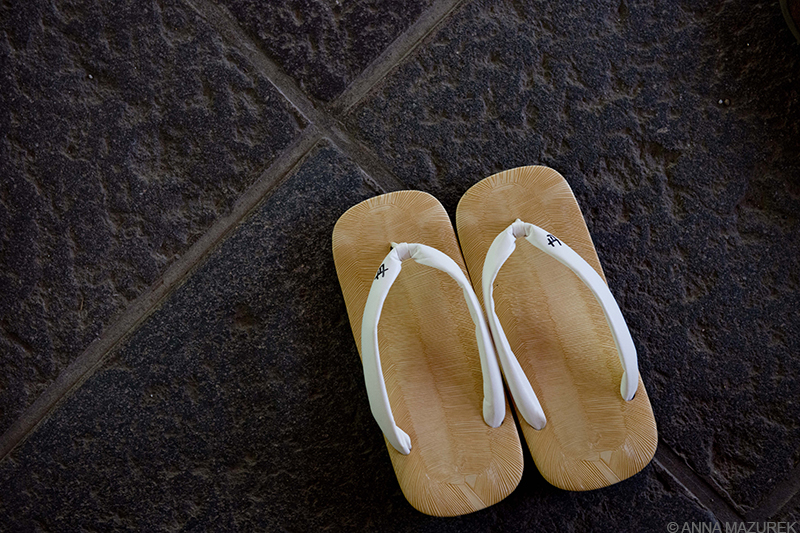
Japan Transport & Logistics
Japan Rail Pass
The most efficient and cost effective way to travel around Japan is to purchase a Japan Rail Pass, which vary in length from seven to 21 days. They offer unlimited travel on ferries, buses and all trains except the Nozomi and Mizuho trains.
| Length | Green (First Class) | Ordinary |
| 7 days | 38,889 Yen ($345 USD) | 29,110 Yen ($258 USD) |
| 14 days | 62,950 Yen ($559 USD) | 46,390 Yen ($412 USD) |
| 21 days | 81,870 Yen ($727 USD) | 59,350 Yen ($527 USD) |
You must purchase your rail pass BEFORE you enter Japan. You will receive an exchange order which you redeem for your pass once you arrive in Japan. The pass is only intended for tourists and not residents of Japan. (I purchased the 21 day pass in Singapore before I left for Japan.)
Download the Hyperdia app for timetables for all trains. It provides up to date train times and departure platforms. For more information on the rail pass, check out http://www.jrpass.com/.
Pocket WIFI Hotspot
Another great investment for any Japan trip is a pocket WIFI hotspot. You will never get lost. You simply reserve the hotspot online, pickup at the airport then drop it in a mailbox with the prepaid envelope when you leave. I recommend renting a hotspot for the entire trip instead of getting a SIM card because most SIM cards only come with data access anyways. (Most of Japan is on a CDMA-based phone network.) For more on internet in Japan, check out this guide.
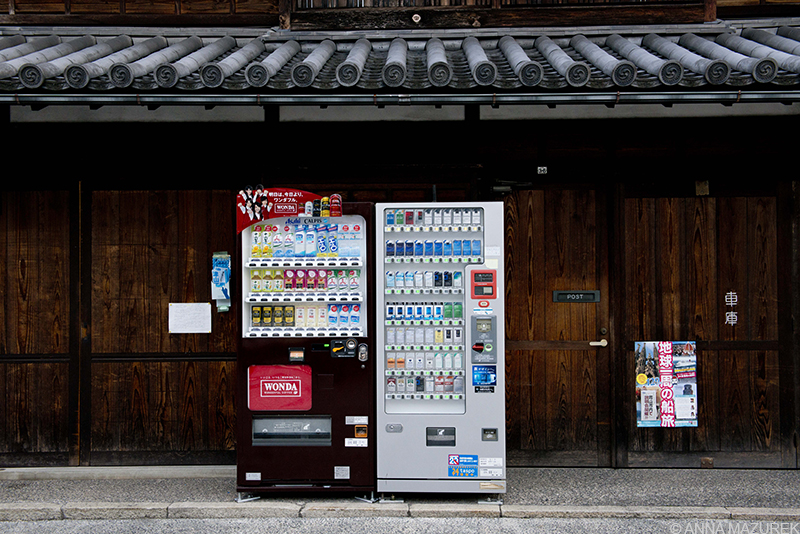
Vending machines are everywhere in Japan. If you’re lucky, you might find one selling beer!
Budget Tips for Traveling in Japan
The most expensive part of Japan is transport (rail pass) and accommodation. Hostels range from $40 in big cities to $15 in places like Kagoshima. Eating cheap is easy if you stick to local spots to keep meals between $3-10 USD. Remote places like Yakushima are expensive but are totally worth it.
- Onigiri. These triangle shaped rice snacks are my favorite and good for the budget. They come with various fillings and are available at every train station or convenience store. They are a great meal substitute or snack!
- Diaso, the Japanese dollar store, is the most amazing place in the world. They have EVERYTHING you could ever need – rain gear, hair clips, ceramic gnomes (You know how much I love gnomes!) and great snack options! This is where I bought my rain poncho and rain pants for my Yakushima hikes!
- Currency Converter. To keep yourself on budget, download the XE currency converter app. It works offline and is great for checking the cost of purchases so you don’t accidently overspend.
- Take a reusable water bottle. The water in Japan is total safe to drink. Save the environment and your wallet by simply refilling a stainless steel or BPA free plastic water bottle. (I’m a big fan of Klean Kateen’s insulated stainless steel bottles.)
- Skip the rail pass. If you don’t want to splurge on the rail pass (which is totally worth it), buses are a cheaper option, but you’ll need Japanese travel agents to help book. Japan is extremely safe so hitchhiking is fairly common. Slow ferries are also good budget options.
- All-You-Can-Drink Karaoke. Many karaoke places offer all-you-can-drink rates, which are a good deal if you want to party and sing your heart out especially in Tokyo!
- $3 Meals. For cheap beers, Torikizoku is a yakatori chain in Japan, and everything on the menu is under $3. For cheap meals, try Yoshinoya, a restaurant chain that sells beef bowls for $3-5 USD, which are actually pretty good.
- Avoid ATM fees. Japanese ATMs will charge you a fee for taking out cash. Considering opening a free Charles Schwab Investor Checking account that waives ATM fees and currency conversion rates. For more details, check out my Travel Banking 101 post. FYI: Not all ATMs are open 24-hours.
- Pick and Choose Temples. Most of the famous temples charge a small admission fee, which can add up quickly. Research the main temples or places you want to visit in advance. (For me, this means to Google everything to find best places for photography.) Make a list of your top must-see places. Then, focus on visiting lesser known sites off the beaten path that do not charge an admission fee that are often less crowded, which is another perk especially if you’re into photography!
For more about Japan travel, check out the Travel Tuesday Interview with Tokyo Becky, an Ohio native that’s been living in Tokyo for 12 years, and my post about photographing Fushimi Inari at sunrise.

